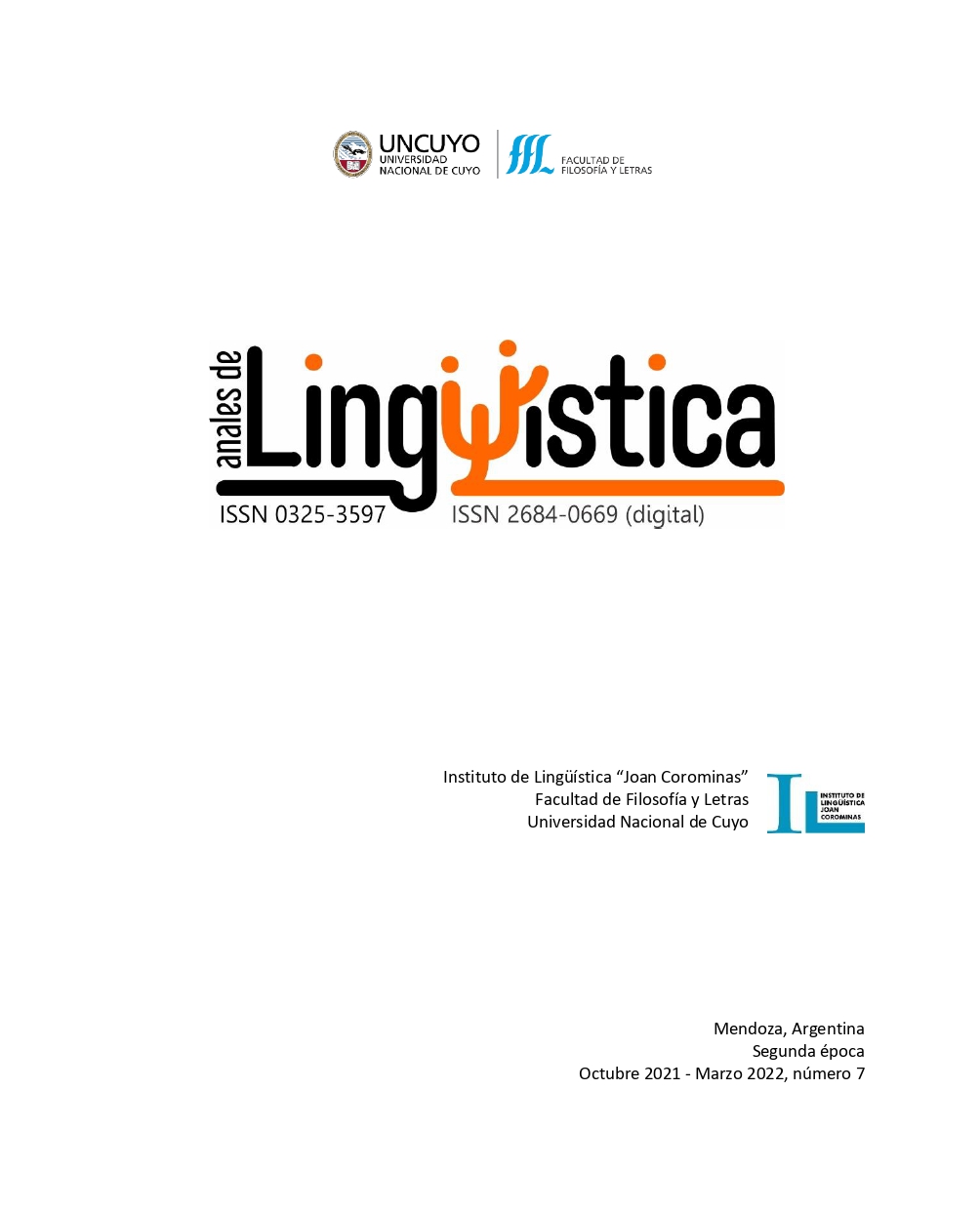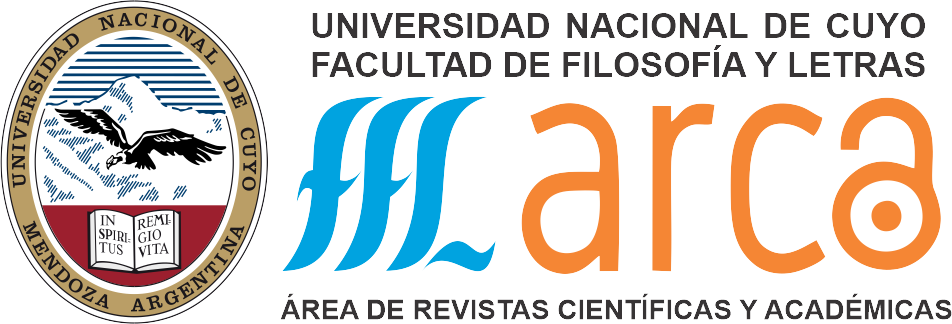Natural language as a formal language
Keywords:
formal languages, natural language, formal grammar, parsing, syntactic analysis, computational linguistics, natural language processing, machine learningAbstract
Formal languages theory is useful for the study of natural language. In particular, it is of interest to study the adequacy of the grammatical formalisms to express syntactic phenomena present in natural language. First, it helps to draw hypotheses about the nature and complexity of the speaker-hearer linguistic competence, a fundamental question in linguistics and other cognitive sciences. Moreover, from an engineering point of view, it allows for the knowledge of practical limitations of applications based on those formalisms. This article introduces the problem of adequacy of grammatical formalisms for natural language, also introducing some formal language theory concepts required for this discussion. Then, it reviews the formalisms that have been proposed through history, and the arguments that have been given to support or reject their adequacy.
References
Aaronson, S. (2016). P =? NP. In Jr., J. F. N. y Rassias, M. T., editors, Open Problems in Mathematics, pp. 1–122. Springer.
Baldwin, T. y Kordoni V. (eds.). (2009). Proceedings of the EACL 2009 Workshop on the Interaction between Linguistics and Computational Linguistics: Virtuous, Vicious or Vacuous?. ACL.
Becker, T., Rambow, O., y Niv, M. (1992). The derivational generative power of formal systems or scrambling is beyond LCFRS. Informe técnico, Institute for Research in Cognitive Science, University of Pennsylvania, Pennsylvania, PA.
Bender E. M. y Koller A. (2020). Climbing towards NLU: On Meaning, Form, and Understanding in the Age of Data. En Proceedings of the 58th Annual Meeting of the Association for Computational Linguistics, pp. 5185–5198. ACL.
Boullier, P. (1998). Proposal for a natural language processing syntactic backbone. Informe técnico 3342, INRIA.
Bresnan, J., Kaplan, R. M., Peters, S., y Zaenen, A. (1982). Cross-Serial dependencies in Dutch. Linguistic Inquiry, 13(fall):613–635+.
Chomsky, N. (1956). Three models for the description of language. IRE Transactions on Information Theory, 2(3):113–124.
Chomsky, N. (1957). Syntactic Structures. Mouton (2a ed.).
Chomsky, N. (1959). On certain formal properties of grammars. Information and Control, 2(2):137–167.
Chomsky, N. (1965). Aspects of the Theory of Syntax, vol. 119. The MIT press.
Eisner J., Gallé M., Heinz J., Quattoni A. y Rabusseau G (eds.). (2019). Proceedings of the Workshop on Deep Learning and Formal Languages: Building Bridges. ACL.
Elster, J. (1978). Logic and Society: Contradictions and Possible Worlds. John Wiley & Sons Ltd (1a ed.).
Francez, N. y Wintner, S. (2011). Unification Grammars. Cambridge University Press, New York, NY.
Gazdar, G. (1988). Applicability of indexed grammars to natural languages. En Reyle, U. and Rohrer, C., editores, Natural Language Parsing and Linguistic Theories, pp. 69–94. Reidel, Dordrecht.
Groenink, A. (1997). Mild Context-Sensitivity and Tuple-Based generalizations of Context-Grammar. 20(6):607–636.
Hopcroft, J. E., Motwani, R., y Ullman, J. D. (2000). Introduction to Automata Theory, Languages, and Computation (2a ed.). Addison Wesley.
Joshi, A. K. (1985). Tree adjoining grammars: how much context-sensitivity is required to provide reasonable structural descriptions? En Dowty, D. R., Karttunen, L., and Zwicky, A., editores, Natural Language Parsing. Cambridge University Press, Cambridge.
Jurafsky, D., Martin, J. H. (2008). Speech and language processing. Upper Saddle River: Prentice Hall.
Kallmeyer, L. (2010). Parsing Beyond Context-Free Grammars (Cognitive Technologies). Springer.
Kasami, T., Seki, H., y Fujii, M. (1989). Generalized context-free grammars and multiple context-free grammars. Systems and Computers in Japan, 20(7):43–52.
Manaster-Ramer, A. (1987). Dutch as a formal language. Linguistics and Philosophy, 10(2):221–246.
Marcus, M. P., Kim, G., Marcinkiewicz, M. A., MacIntyre, R., Bies, A., Ferguson, M., Katz, K., y Schasberger, B. (1994). The Penn Treebank: Annotating predicate argument structure. ARPA Human Language Technology Workshop. Morgan Kaufmann.
Michaelis, J. y Kracht, M. (1997). Semilinearity as a syntactic invariant. In Retoré, C., editor, Logical Aspects of Computational Linguistics, vol. 1328, Lecture Notes in Computer Science, pp. 329–345. Springer Berlin Heidelberg.
Partee, B. H., Meulen, T. A. G., y Wall, R. (1990). Mathematical Methods in Linguistics. Studies in Linguistics and Philosophy (1a ed.). Springer.
Pollard, C. (1984). Generalized Phrase Structure Grammars, Head Grammars, and Natural Languages. Tesis doctoral, Universidad de Stanford.
Pollard, C. y Sag, I. A. (1994). Head-Driven Phrase Structure Grammar. University of Chicago Press.
Pullum, G. K. y Gazdar, G. (1982). Natural languages and context-free languages. Linguistics and Philosophy, 4(4):471–504.
Radzinski, D. (1991). Chinese number-names, tree adjoining languages, and mild context-sensitivity. Comput. Linguist., 17(3):277–299.
Rambow O. y Joshi A. K. (1994). A formal look at dependency grammars and phrase-structure grammars, with special consideration of word-order phenomena. En Leo Wanner, editor, Recent Trends in Meaning-Text Theory, Amsterdam and Philadelphia, pp. 167–190.
Shieber, S. M. (1985). Evidence against the context-freeness of natural language. Linguistics and Philosophy, 8(3):333–343.
Steedman, M. (2000). The syntactic process. MIT Press, Cambridge, MA, USA.
Tesnière, L. (1959). Éléments de Syntaxe Structurale. Librairie C. Klincksieck, Paris.
Vijay-Shanker, K. y Weir, D. (1994). The equivalence of four extensions of Context-Free grammar. Mathematical Systems Theory, 27:511–546.
Vijay-Shanker, K., Weir, D., y Joshi, A. (1987). Characterizing structural descriptions produced by various grammatical formalisms. En Proceedings of the 25th Annual Meeting of the Association for Computational Linguistics, Stanford, pp. 104–11. ACL.
Downloads
Published
How to Cite
Issue
Section
License
Copyright (c) 2021 Anales de Lingüística
Esta obra está bajo una Licencia Creative Commons Atribución 2.5 Argentina.
Los/as autores/as que publican en esta revista están de acuerdo con los siguientes términos:
1. Los/as autores conservan los derechos de autor y garantizan a la revista el derecho de ser la primera publicación del trabajo bajo una licecncia Creative Commons Atribución 2.5 Argentina (CC BY 2.5 AR) . Por esto pueden compartir el trabajo con la referencia explícita de la publicación original en esta revista.
2. Anales de lingüística permite y anima a los autores a difundir la publicación realizada electrónicamente, a través de su enlace y/o de la versión postprint del archivo descargado de forma independiente.
3. Usted es libre de:
Compartir — copiar y redistribuir el material en cualquier medio o formato
Adaptar — remezclar, transformar y construir a partir del material para cualquier propósito, incluso comercialmente.












